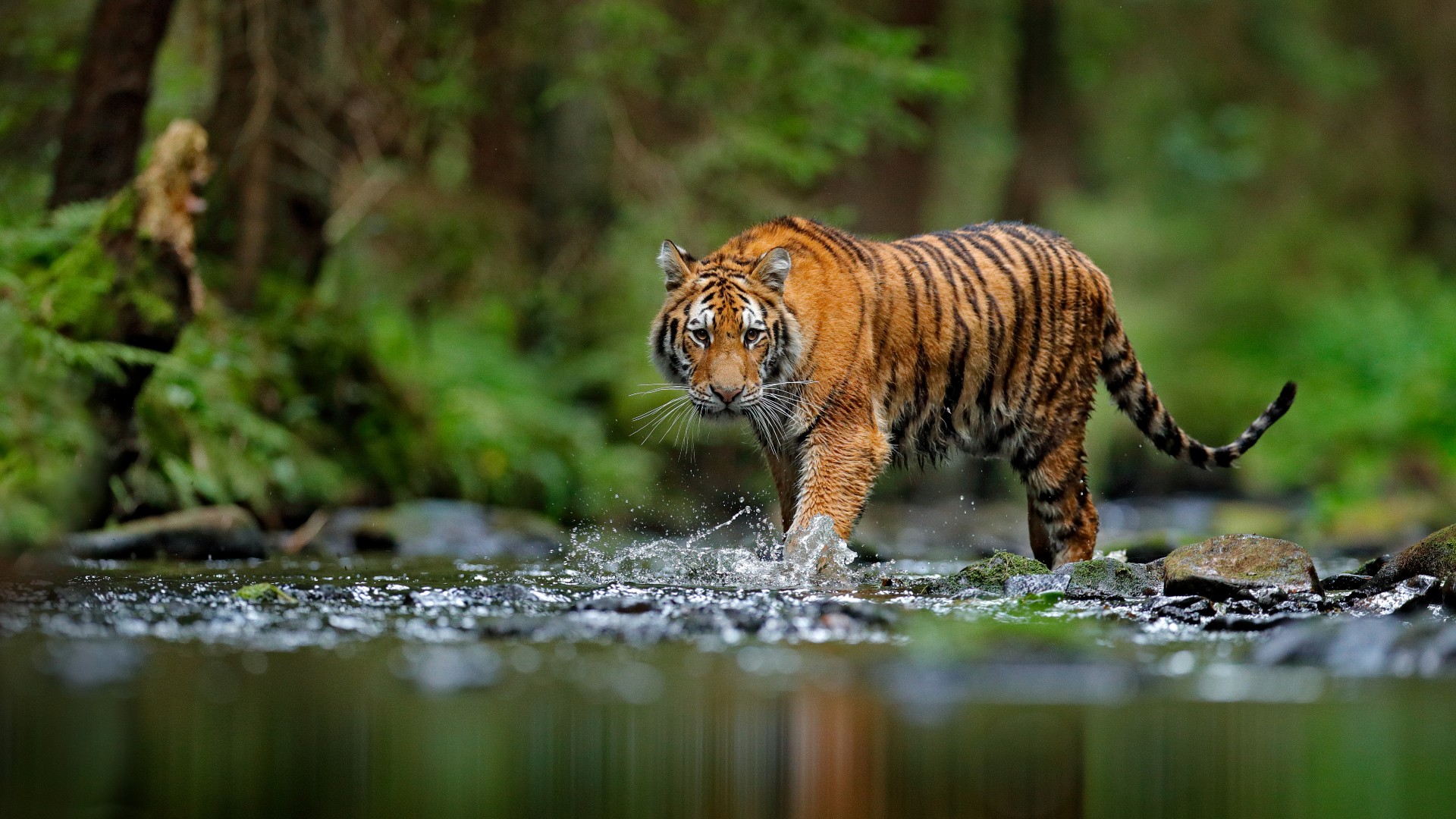
Why are tigers orange?
It has to do with how their prey sees them.

The colors and patterns of an animal serve lots of different purposes — for instance, to help them stand out to mates or even to warn predators that they're toxic. But for ambush predators like tigers, the ability to remain invisible to their prey determines whether they catch dinner or go hungry. So, of all the colors they could be, why are tigers orange?
It's a good question, considering that for humans, orange is a color used for items that need to be ultravisible — things like traffic cones and safety vests. To our eyes, orange stands out in most environments, which makes tigers relatively easy to spot.
But that's because we have what's called trichromatic color vision. When light from the outside world enters the eye, it hits a thin layer in the back called the retina. The retina processes that light using two types of light receptors: rods and cones. Rods only sense differences in light and darkness, not color, and they're used mostly in dim light. Cones are what we use for color perception, and most humans have three types: cones for blue, green and red. That's why our vision is called trichromatic: We can see three primary colors and their colorful combinations. We share this style of vision with apes and some monkeys.
Related: Why is the color blue so rare in nature?
But most terrestrial mammals — including dogs, cats, horses and deer — have dichromatic color vision. That means their retinas contain cones for only two colors: blue and green. Humans who get information only from their blue and green cones are considered color-blind, and can't distinguish between red and green shades. The same is likely true for dichromatic animals.
Terrestrial mammals like deer are the tiger's main prey, and their dichromatic vision means they don't see the predator as orange — they see it as green. That makes the tiger much harder to spot as it's prowling behind a bush or crouching in the grass.
Although green tigers would probably be even harder to spot, especially by us trichromats, evolution just doesn't work with the ingredients necessary to make green fur.
Sign up for the Live Science daily newsletter now
Get the world’s most fascinating discoveries delivered straight to your inbox.
"In essence, it is easier to produce browns and oranges because of the biomolecular structure of the makeup of the animal" than it is to produce green, said John Fennell, a lecturer in animal sensing and biometrics at Bristol Veterinary School in the United Kingdom. "In fact, the only recognizably green [mammal] is a sloth, and its fur isn't actually green. That's an alga that grows in its fur. And as far as I'm aware, there are no green furry animals."
Fennell has used artificial intelligence to determine the ideal coloration and the ideal patterns for hiding in various environments. In 2018, his studies were demonstrated on the BBC One program "Animals Behaving Badly."
"We had the presenter do a sort of a simple experiment to illustrate how effective the particular camouflage would be if you were a dichromat," Fennell told Live Science. "There was an image in trichromat color, so a normal color image, and she wore dichromatic glasses, which rendered her color-blind. And we contrasted her wearing the glasses and trying to find the tigers in the images with one set with glasses on and one set of glasses off." It took the presenter much longer to find the tiger when wearing the dichromatic glasses.
But considering that evolution tends to favor traits that help a species survive, why wouldn't prey animals have evolved the ability to see orange?
"You would imagine that in an evolutionary arms race, an improvement in visual perception would provide the prey with better visual systems in the first instance," Fennell said. "But there seems to be no evolutionary pressure, particularly for deer, which are the main prey of the tiger, to become trichromatic. That's probably because the tiger doesn't know it's orange either because it, too, is a dichromat.
"So the evolutionary arms race really doesn't exist for that color, as such," Fennell said. "It's just that the tiger has evolved over the sweep of evolution to have a coloring, a camouflage system, which protects it very well in its jungle setting."
Originally published on Live Science.

Ashley Hamer is a contributing writer for Live Science who has written about everything from space and quantum physics to health and psychology. She's the host of the podcast Taboo Science and the former host of Curiosity Daily from Discovery. She has also written for the YouTube channels SciShow and It's Okay to Be Smart. With a master's degree in jazz saxophone from the University of North Texas, Ashley has an unconventional background that gives her science writing a unique perspective and an outsider's point of view.









